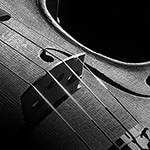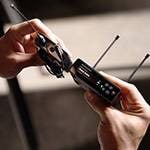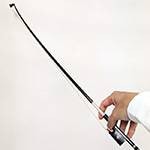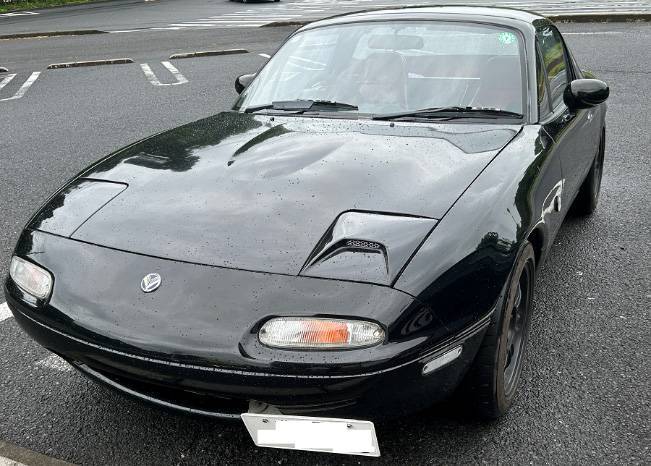
Everyone, take a look—doesn’t it look cool? I replaced the passenger-side retractable headlight cover with one that has an air duct, and just doing this makes me want to keep going. I’m not sure about the actual performance benefits, but as the driver, I’m pretty happy, so no problem there. If you see a NA Roadster with an NB dashboard in this kind of setup, there’s a good chance that it’s me. I’ve swapped out all the intake and exhaust parts, the clutch is semi-upgraded, and I’ve installed an ultra-light flywheel—so everything’s ready to go! Not that I’ve had many chances to actually put it to use… maybe just when I’m merging onto the highway.
Anyway, let’s set cars aside and start talking about guitars. Depending on the model, Gibsons can come with a variety of tremolo arms. When you think of a tremolo on a Les Paul, the Bigsby B7 is probably the first thing that comes to mind. But when it comes to the SG, there’s a wider range: the Bigsby B5, the Maestro Vibrola, the Sideways Vibrola, and even stories of people modifying a Bigsby B7 to fit one. It’s quite the lineup. This time, I would like to focus on the Maestro Vibrola.
When the Les Paul was redesigned with the SG shape in 1961, the first tremolo unit to appear was the Sideways Vibrola. However, it received poor reception due to its delicate handling and considerable weight. By 1963, it was completely replaced with a new unit: the Maestro Vibrola. Some call it a “leaf spring”, which admittedly sounds a bit dull and lacks romance, but leaf spring might actually be the more commonly used name.
Even within the Maestro Vibrola line, there are variations: short, long, and the ebony block version. Besides SG, the leaf spring was also installed on models like the Firebird and ES-355. The ebony block version, in particular, has a luxurious look that many admire.
Here’s the long Maestro Vibrola, which is one of those variations.

This is the reissue version currently being offered by Gibson.
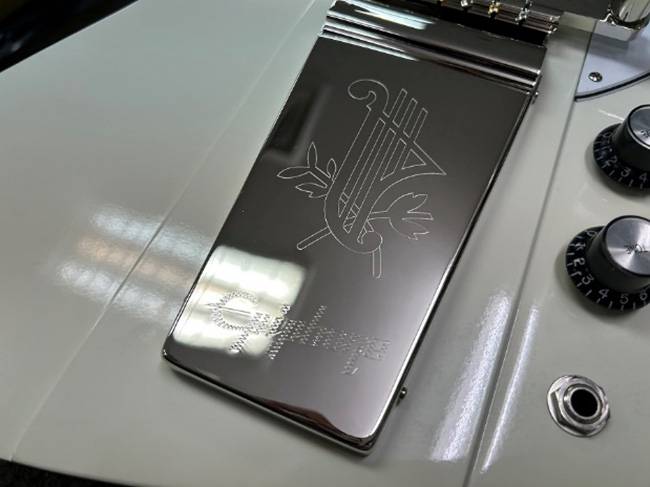
Incidentally, the Epiphone version even has the proper Epiphone engraving. The internal structure is the same for both; if you remove the small screw on the side, you can see inside.
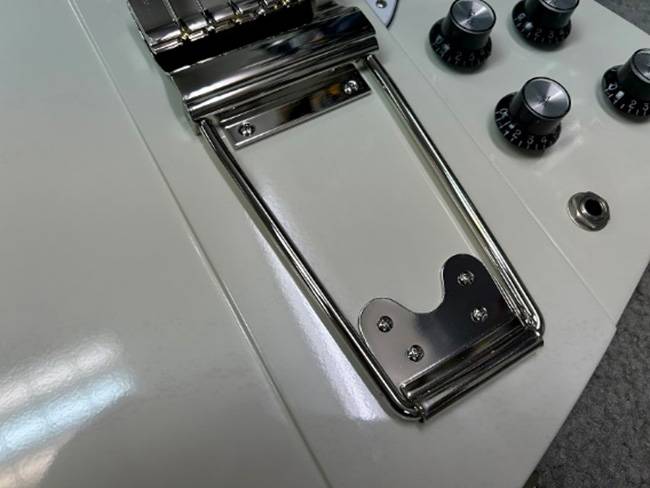
It looks something like this. The mounting foot folds inward for storage, but it can also cleverly pivot outward. This allows it to be secured to the side of the body at the endpin area when installed on a full-hollow body guitar. It's a well-thought-out design.
Even if you're not using a Gibson or Epiphone, this type of unit is a strong contender if you're thinking of adding a tremolo. Still, there’s something undeniably appealing about that engraved harp and brand logo.
As the name "leaf spring" suggests, its construction is quite simple.
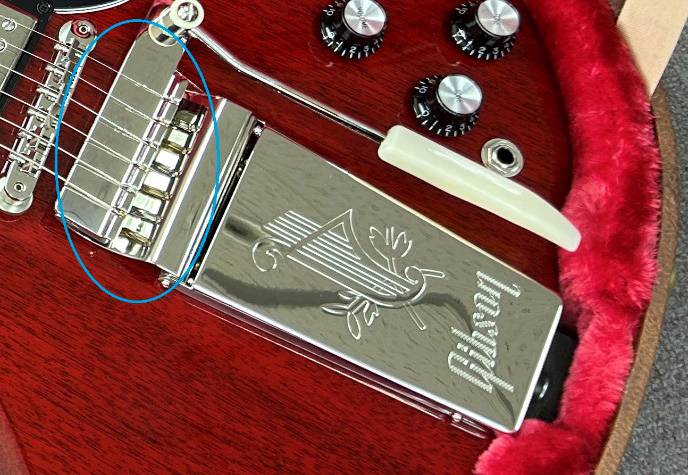
The area outlined in blue, where the gently arched metal part touches the body, acts as the spring itself. When you push the tremolo arm down, the leaf spring mechanism ensures it returns to its original position. In other words, the tuning goes way out of whack. I’m not joking; The tuning goes out completely.
The upsides? It looks cool, it has that vintage charm, and it helps reduce neck dive. And, that’s about it. The Maestro Vibrola is a system that prioritizes style over practicality with no apologies. But hey, maybe that’s exactly why it’s so irresistible.
How about giving it a try? Epiphone makes it more accessible.
EPIPHONE / SG Standard '60s Maestro Vibrola Vintage Cherry
Or maybe go all in and match with me by getting the real deal.





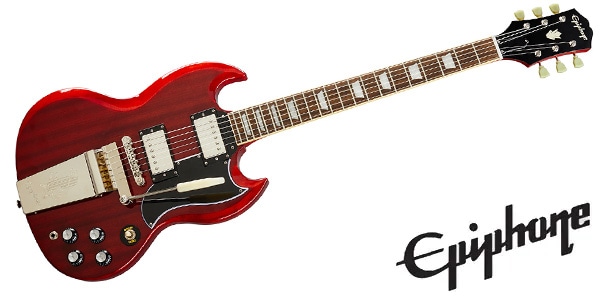
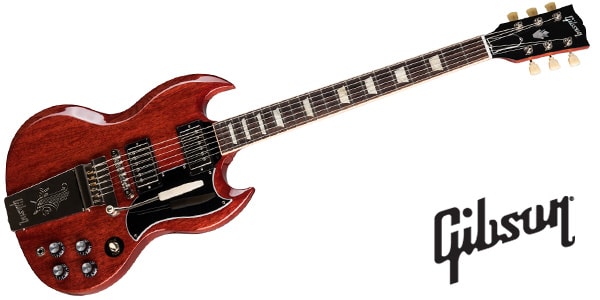

![MONTREUX / Vibrola Tremolo set long Chrome new[1383]](/images/shop/prod_img/m/mont_1383nn.jpg)



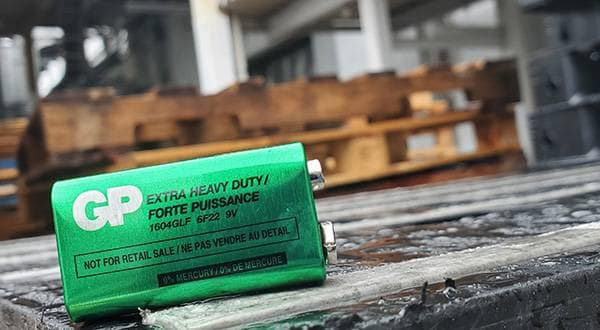
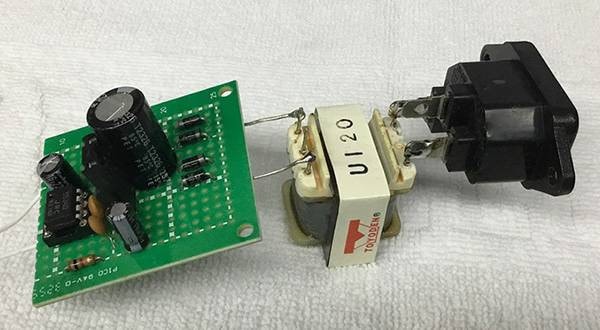
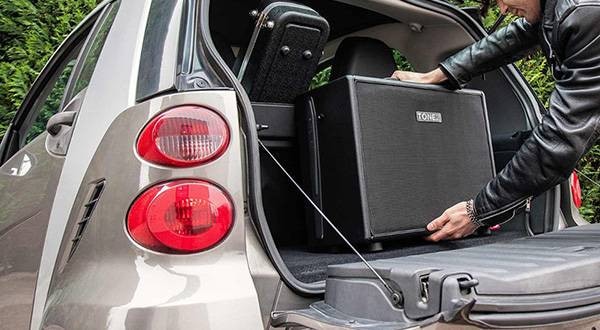
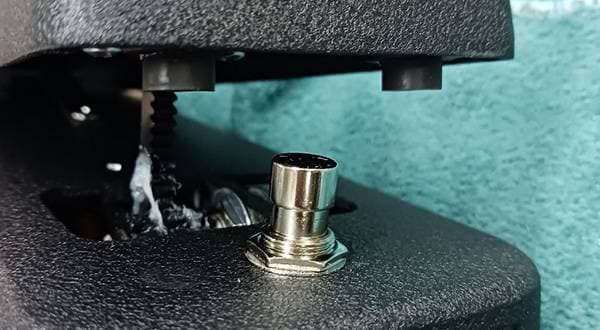
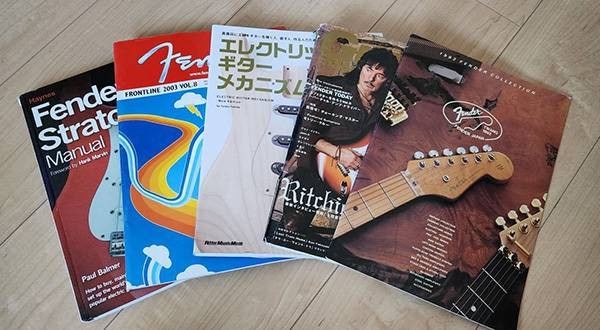
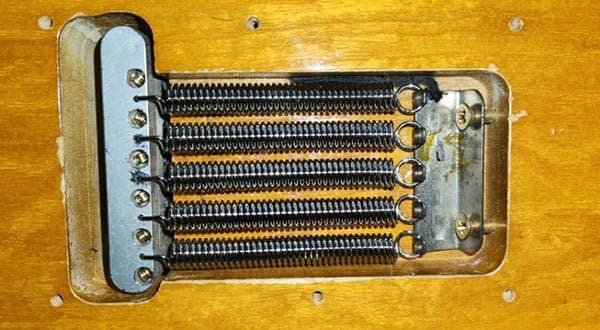
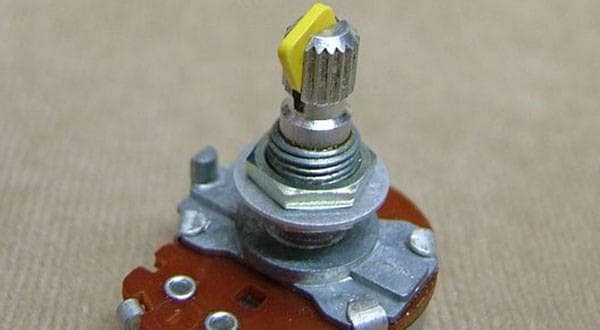
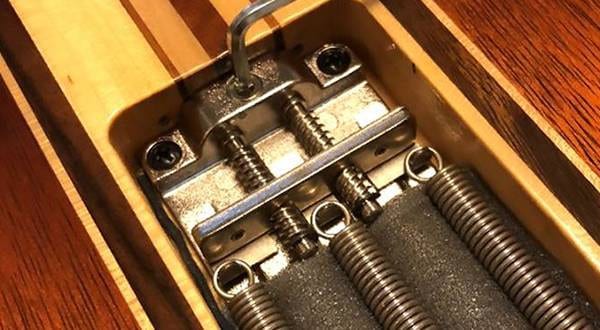
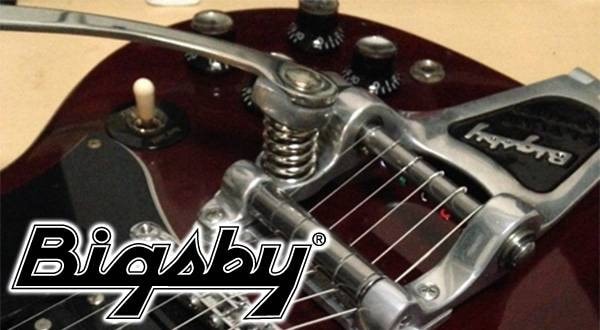
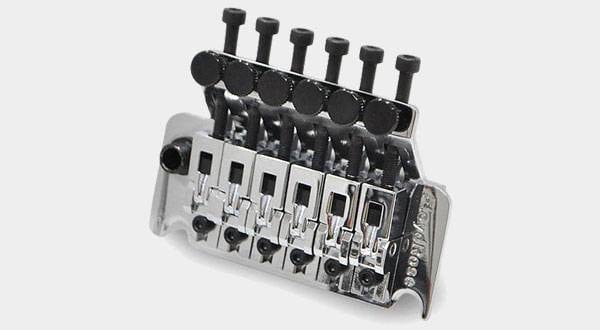
 ギターパーツの沼
ギターパーツの沼
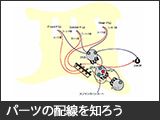 パーツの配線を知ろう
パーツの配線を知ろう
 オクターブチューニングの方法
オクターブチューニングの方法
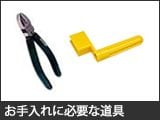 お手入れに必要な道具
お手入れに必要な道具
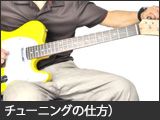 音を合わせる(チューニングの方法)
音を合わせる(チューニングの方法)
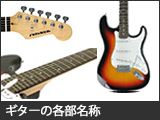 ギターの各部名称
ギターの各部名称
